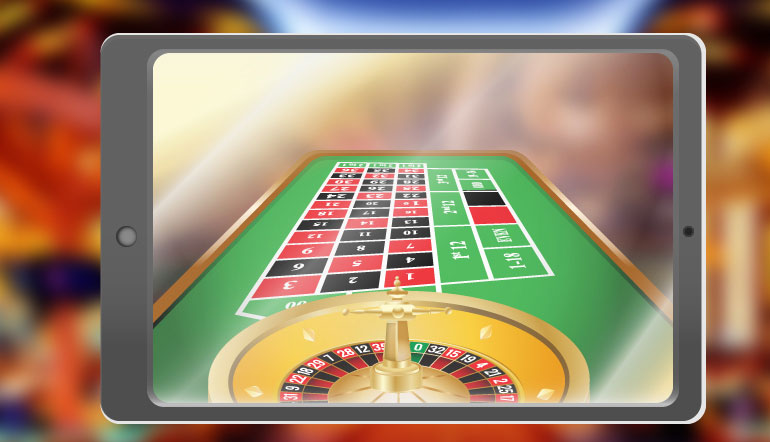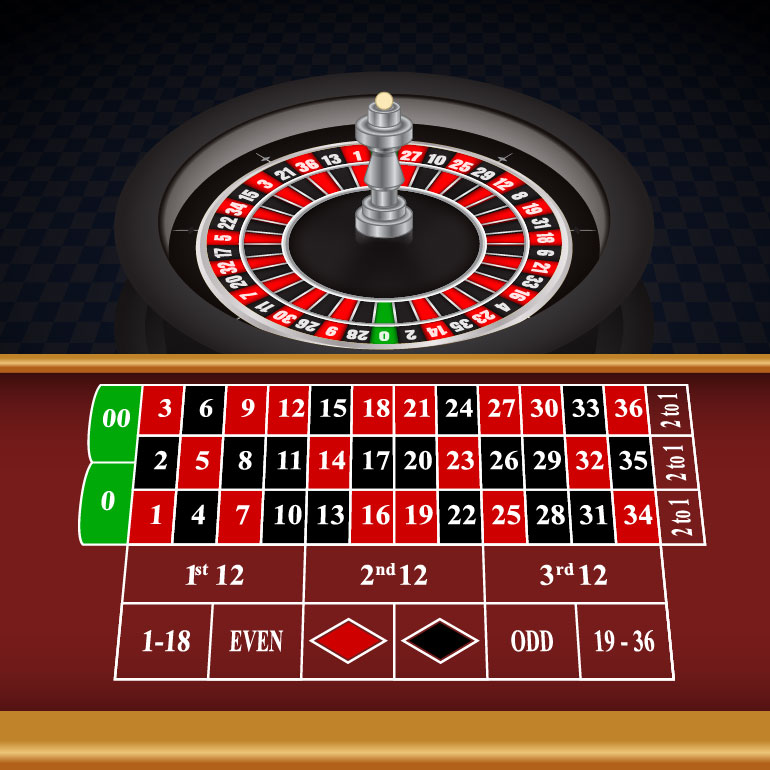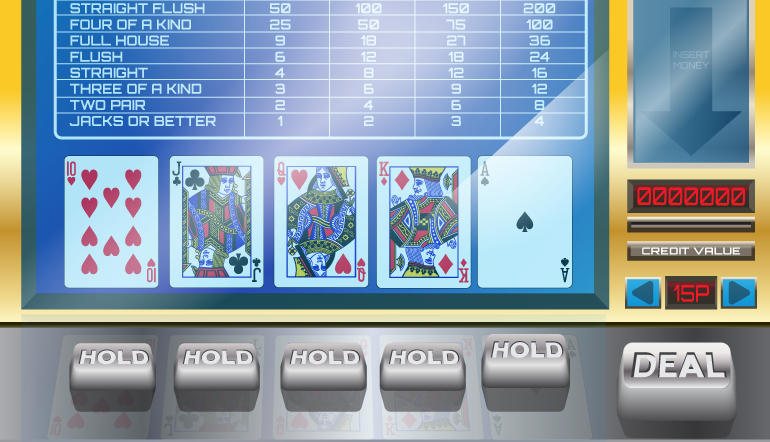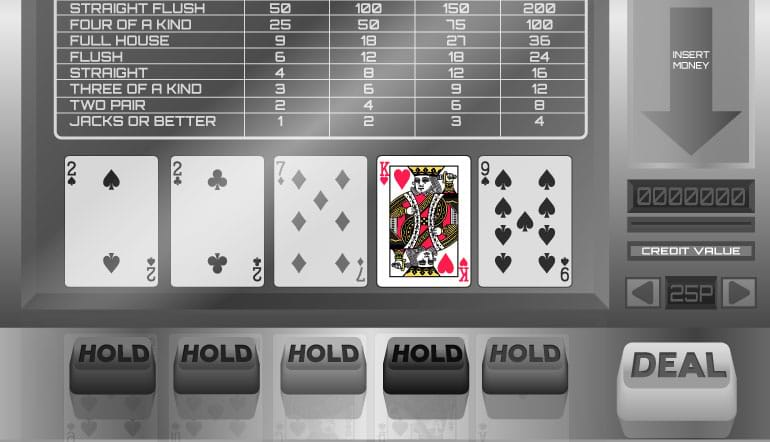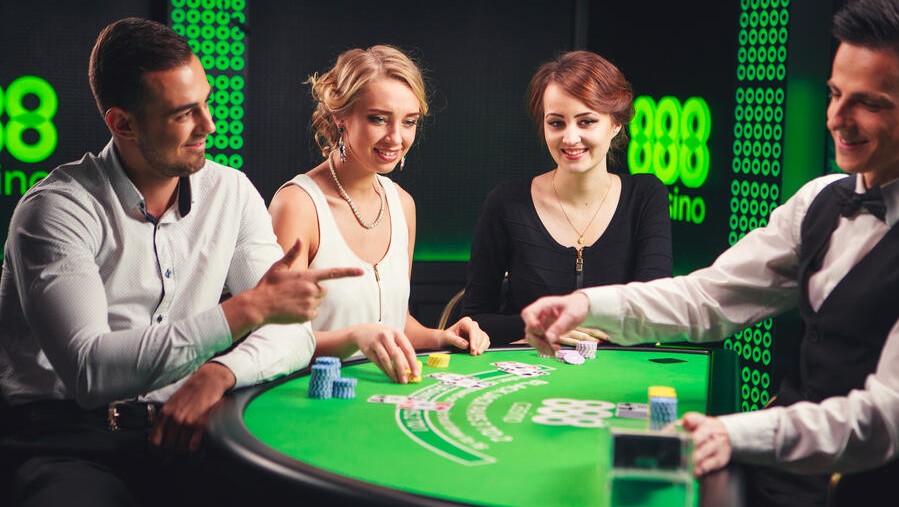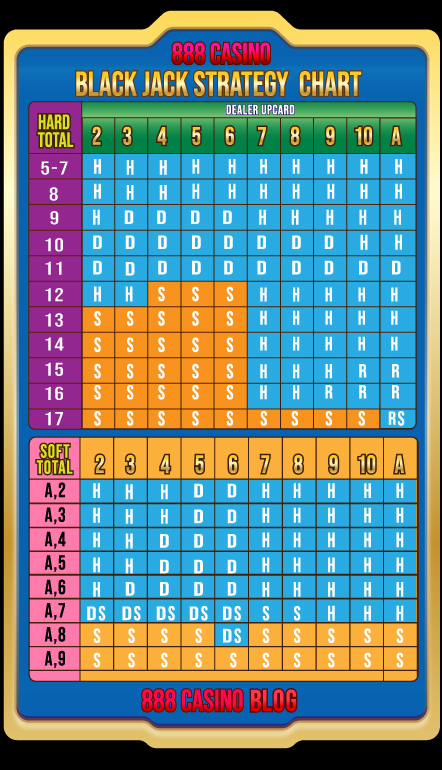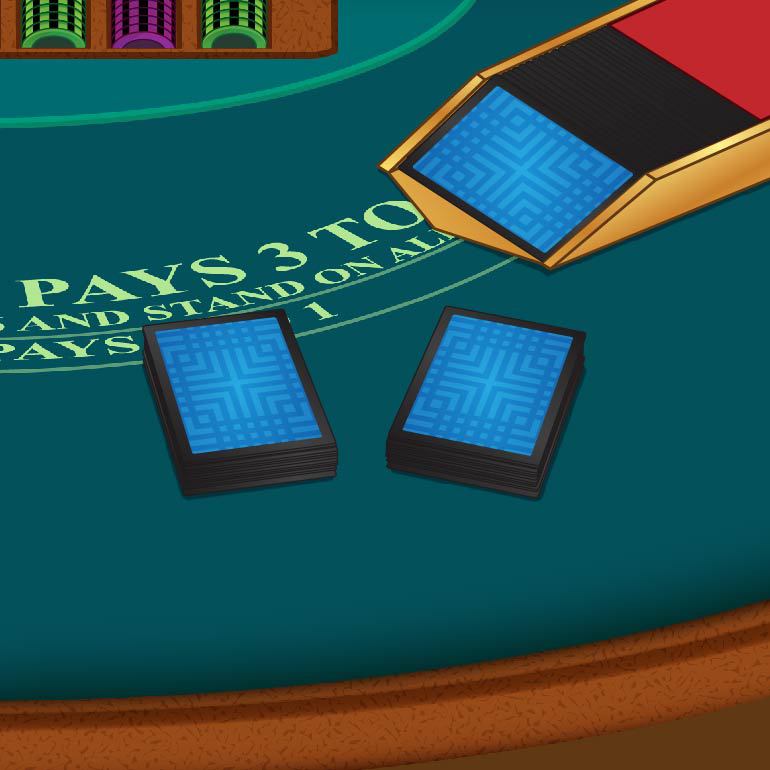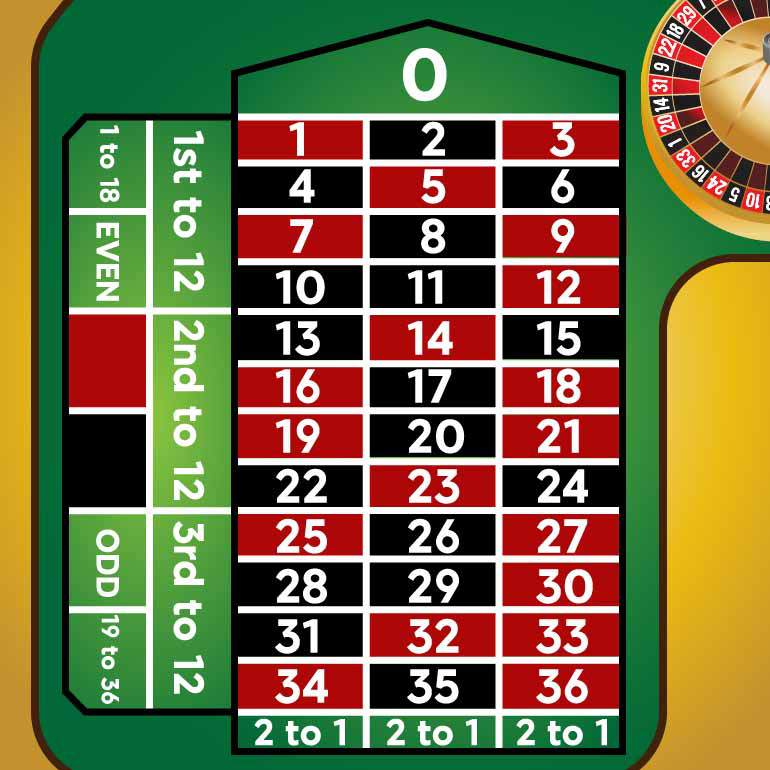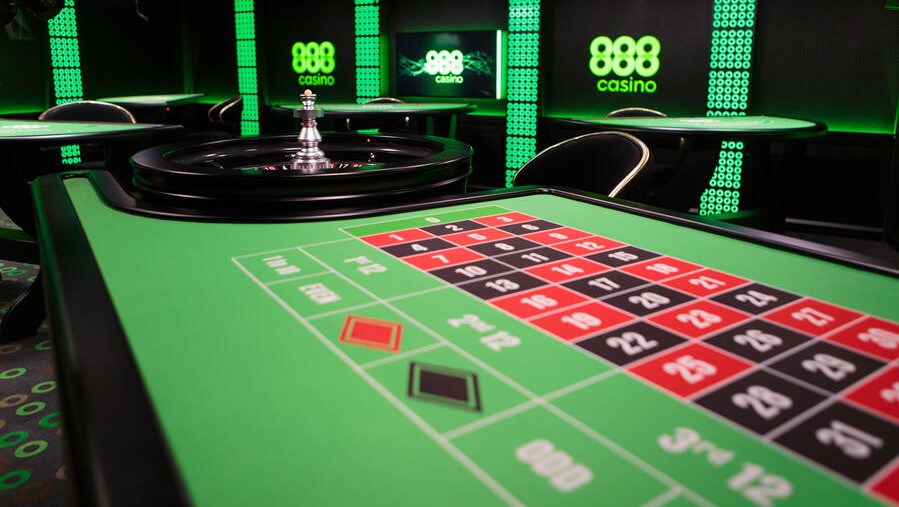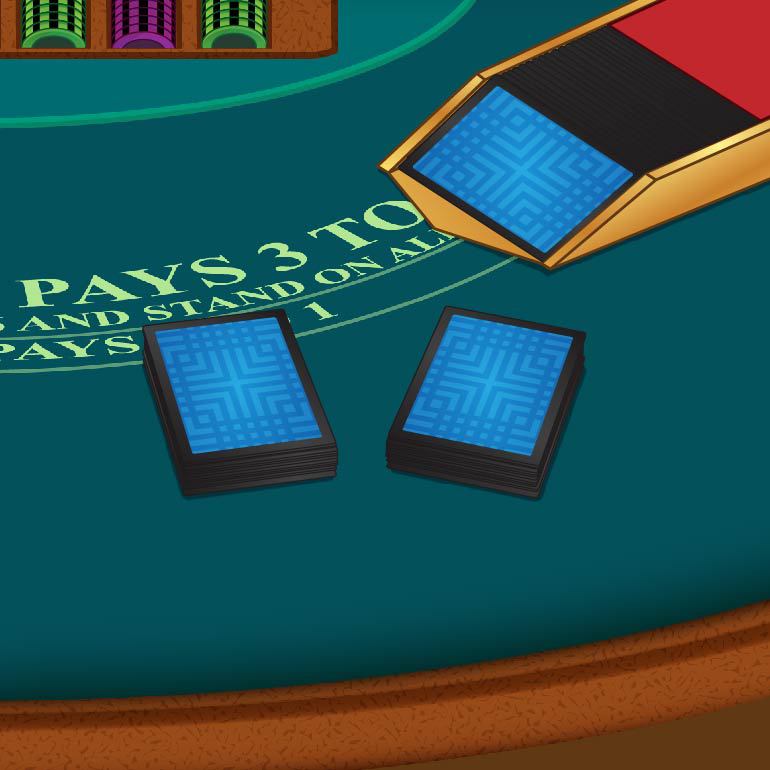When you think about how to play deuces wild video poker, changes in pay tables mean players must adjust strategies to get the most out of the game. Using the right deuces wild video poker strategy can give you a good advantage.
The key to success is learning optimal video poker deuces wild strategy within the pay table. With the right deuces wild strategy, you can quite literally turn the table to your advantage.
How to Play Deuces Wild Video Poker: Introduction
Deuces wild is loved by video poker fans for the exciting gameplay created by having all 2s function as wild cards. This opens opportunities for more winning hands, but it also requires adjusting your strategy to fit the game's pay table.
With expert play, the house edge can be extremely low in deuces wild video poker. Some pay tables offer returns over 100% with perfect strategy. But to capitalize on these generous odds, players need to know which starting hands are worth holding or folding in different situations.
In this article, we’ll be exploring the strategic nuances of deuces wild video poker using one of the best pay tables widely available today – the, "Not So Ugly" version commonly found in live and online casinos.
Deuces Wild Video Poker Strategy: Pay Table
The pay table has changes that make the deuces wild game special. Because there are changes all over the pay table, it’s important to use a deuces wild video poker strategy since the impact on outcomes can vary.
For instance, common changes aren't confined to payoffs on full houses and flushes, as on many games without wild cards.
Knowing how to play deuces wild video poker using video poker deuces wild strategy is the key to standing the best chances of winning. Read on because this article:
- Breaks down the problems of knowing how to play video poker deuces wild.
- Provides a realistic video poker deuces wild strategy you can start learning today.
Finding the Best Deuces Wild Video Poker Game to Play
You need to make sure that video poker deuces wild games are widely available. Then you can learn the best deuces wild video poker strategy and adjust if necessary.
In online casinos and in live casinos throughout much of the United States, "Not So Ugly" Deuces Wild is the game of choice.
You won't find it in every casino. In many live casinos, you'll find their best Deuces version has a reduced pay table. But for those who love Deuces, the NSU game is worth a search, online as well as in land-based casinos. The game graphics don't display the words, "Not So Ugly." You’ll see, "Deuces Wild."
The NSU tag is a nickname devised by players to signify a game that isn't quite as lucrative as the original full-pay Deuces game, but gives you a much better shot at winning, than the first reduced pay games. It’s important to remember:
- Look for the best-paying version of Deuces Wild video poker you can find. Often, that's "Not So Ugly" Deuces Wild.
- A deuces wild video poker strategy chart helps you determine, the best play to make after your first five cards are dealt.
- If you must play a game with a different pay table, there’re video poker deuces wild strategy adjustments to make.

Video Poker Deuces Wild: Pay Table
Full-pay Deuces seems restricted to a handful of Nevada casinos nowadays. Not even online casinos have picked up the game with its 100.8% theoretical payback with expert play.
Instead, players flock to NSU Deuces, which returns 99.7 percent with expert play. Here is the full pay table:
"NOT SO UGLY" DEUCES WILD
| Hand | Payoff | ||||
|---|---|---|---|---|---|
|
1-coin bet |
2-coin bet | 3-coin bet | 4-coin bet | 5-coin bet | |
|
Royal flush |
250 | 500 | 750 | 1,000 | 4,000 |
|
Four 2s |
200 | 400 | 600 | 800 | 1,000 |
|
Royal with 2s |
25 | 50 | 75 | 100 | 125 |
|
Five of a kind |
16 | 32 | 48 | 64 | 80 |
|
Straight flush |
10 | 20 | 30 | 40 | 50 |
| Four of a kind | 4 | 8 | 12 | 16 | 20 |
| Full house | 4 | 8 | 12 | 16 | 20 |
| Flush | 3 | 6 | 9 | 12 | 15 |
| Straight | 2 | 4 | 6 | 8 | 10 |
|
Three of a kind |
1 | 2 | 3 | 4 | 5 |
As is normal in Deuces Wild games:
- There’s a big secondary jackpot on four 2s, with a 1,000-coin payoff.
- The big payoff of 4,000 coins for a five-coin wager is on a natural royal flush i.e. Ace, King, Queen, Jack and 10 of the same suit with no wild cards.
With expert play, four 2s occur about eight times as often as natural royals at once per 5,356 hands vs. once per 43,456 on the royal. What are the expert deuces wild video poker strategy rules? Try this chart:
NSU DEUCES STRATEGY CHART (Note: Hold all 2s)
|
FOUR-DEUCE HANDS |
1 – 4 deuces |
| THREE-DEUCE HANDS |
1 – WRF (wild royal flush) 2 – 5K 3 – deuces |
| TWO-DEUCE HANDS |
1 – WRF 2 – 5K 3 – SF 4 – 4 K 5 – 4 WRF 6 – 4 OSF 7 – 2 deuces |
| ONE-DEUCE HANDS |
1 – WRF 2 – 5K 3 – SF 4 – 4K 5 – 4 WRF 6 – FH 7 – FL 8 – 4 OSF (2 plus 3-4-5 or higher); or 4 ISF, 4 low or higher. 9 – ST 10 – 4 ISF, 2-3-4-6, 2-3-5-6, or 4 ISF, 3 low or higher, 2 gaps among non-wilds 11 – 3K 12 – 4 ISF, Ace low among non-wilds 13 – 3 WRF, no Ace 14 – 3 OSF, 2 plus 6 low or higher 15 – 3 WRF, includes Ace 16 – 3 OSF, 2-4-5, 2-4-6; or 3 ISF. 5 low or higher among non-wilds 17 – Hold only the 2 |
| NO-DEUCE HANDS |
1 – RF 2 – 4 RF 3 – SF 4 – 4K 5 – FH 6 – FL 7 – ST 8 – 3K 9 – 4 SF 10 – 3 RF 11 – 4 FL 2 Pair 12 – 3 OSF, 5 low or higher 13– 1 pair 14 – 4 OST 4 low or higher 15 – 3 ISF 3-4-6, 3-5-6; 3ISF 3 low or higher 2 gaps; 3 ISF 3-4-5, 4-5-6, or 4 low or higher, 1 gap 16 – Suited J-10, Q-10, or Q-J 17 – 3 SF, A-3-4, A-3-5, or A-4-5 18 – 4 IST, includes A-K-Q-J 19 – Suited K-10, K-J, K-Q 20 – Discard all |
HOLD THOSE DEUCES
Bear in mind the following:
- The deuces wild video poker strategy chart is broken into segments depending on how many 2s are in your starting hand.
- Holding deuces always improves your average return. On this note;
- There’s never a correct time to discard a 2. So, the chart is arranged with the assumption your holds will start with however many 2s you are dealt.
The idea is to compare your hand to the deuces wild video poker strategy chart, then choose the highest-ranking combination in your hand to hold.
If your starting hand is a 2 of any suit along with 6-7-8 of hearts and a 9 of clubs:
- You can read the hand as a straight, with the 2 substituting for a 5 or 10.
- Or you could read it as a four-card open-ended straight flush, with the 2 standing in for a 5 or 9 of hearts.
A look at one-deuce hands, on the deuces wild video poker strategy chart finds the four-card open-ended straight flush listed higher than the straight. So, your best play is to keep the 2 and the three consecutive hearts, while discarding the 9 of clubs.
Video Poker Deuces Wild: Strategy Examples
Below are several, deuces wild video poker strategy card combinations. Let's try a few sample hands just to give you an idea of the kinds of things to look for on the chart.
THREE-DEUCE HANDS: Strategy Examples:
|
8 of hearts, 8 of spades, 2 of diamonds, 2 of clubs, 2 of spades |
|---|
|
Five of a kind is solidly on the “hold all five” side of the line. You’ll get 80 coins for a five-coin bet if you hold all five. But the average payback drops to 72.3 coins if you hold just the 2s and discard the 8s. |
|
6 of diamonds, 7 of diamonds, 2 of diamonds, 2 of clubs, 2 of spades |
|---|
|
Check the strategy table, and you'll find no line for "straight flush." If you have a five of a kind or a wild royal, hold them, but with anything else, hold the 2s and discard the rest. The average return of 72.3 coins when you hold 2-2-2 dwarfs the 50-coin payback on a straight flush. |
TWO-DEUCE HANDS: Strategy Examples:
|
6 of diamonds, 9 of diamonds, 2 of hearts, 2 of spades, 7 of clubs |
|---|
|
In several places on the strategy table, you'll find references to "one gap" or "two gaps." Here's an example of how that works. This is a two-gap hand, because there’s room for both a 7 and an 8 between the two diamonds. If the higher diamond was an 8, this would be a one-gap hand with only a spot for a 7 between the 6 and 8. It's affective: with 6 and 9 of diamonds along with two 2s, a straight flush can be completed by drawing one of the two 2s, a 7 of diamonds or an 8 of diamonds. If you had 6 and 8 of diamonds and the 2s, the straight flush could be completed with either of the remaining 2s; or a 4, 5, 7, 9 or 10 of diamonds, with the two 2s filling the gaps. There’re more ways to complete the straight flush with fewer gaps, and that makes a strategy difference. We’ll hold four cards to a straight flush with one gap between the suited non-wild cards, but not with two gaps. The better play with two gaps is to hold 2-2, with an average return of 15.34 coins per five wagered, rather than 2-2-6-9, with a 15.11-coin average. Switch the 9 to an 8, and we make the opposite play. |
| 2 of hearts, 2 of spades, 4 of diamonds, 6 of hearts, 9 of clubs |
|---|
|
The Deuces Wild pay table starts at three of a kind. But there’s no need to hold a third card with two deuces. No matter what you draw, you’ll still have at least three of a kind. So, if there’re no paying hands of four of a kind or better, and no straight flush opportunities, your best play is to see where the deuces take you. |
ONE-DEUCE HANDS: Strategy Example:
| 2 of clubs, 3 of hearts, 7 of hearts, 10 of hearts, Queen of spades |
|---|
|
There are several potential holds to choose from in this hand: a) Do you hold the 2 with all three hearts for a one-card flush draw? b) Do you hold the 2 with the 7 and 10, three parts of a straight flush with two gaps on the inside? c) Do you hold the 2 all by itself? If you check the deuces wild video poker strategy chart under one-deuce hands, you’ll see that no three-card inside straight flushes with two inside gaps appear. Nor do four parts of a flush. So, you’re better off with the potential that a single deuce represents. For the record, the average returns are 5.02 coins when holding just the 2, 4.79 when holding 2-3-7-10, and 4.72 when holding 2-7-10. |
NO-DEUCE HANDS: Strategy Example:
| 5 of clubs, 5 of spades, Queen of hearts, Queen of diamonds, 9 of clubs |
|---|
|
This is one of the defining hands of NSU Deuces, and related games that pay 4-for-1 on both four of a kind and full houses and 3-for-1 on flushes. Because full houses pay as much as four of a kind. And because a one-card draw will complete a full house more often than a three-card draw completes four of a kind or better, the best play here is to hold both pairs. It’s not a close call, with a 3.40-coin average return when we hold both pairs, compared to 2.74 when we pick one pair to hold and discard the other three cards. That’s a strategy departure from other Deuces games. The original, now exceedingly rare, full-pay Deuces Wild paid 5-for-1 on quads and only 3-for-1 on full houses and 2-for-1 on flushes, so the original strategy Deuces players learned was to hold just one pair and discard the other. |
I hope the above gave you a better understanding of how to play video poker deuces wild. Practicing with the deuces wild video poker chart will build the pattern recognition you need to spot optimal holds quickly.
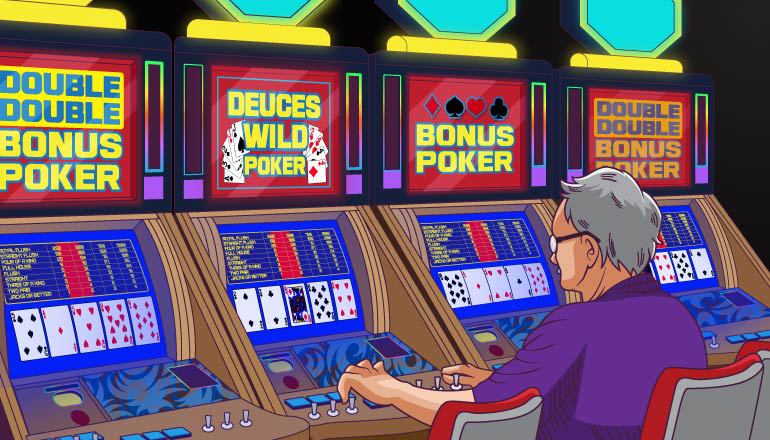
A WORD ABOUT OTHER 4-4-3 GAMES
There’re several Deuces Wild variations that have the same 4-for-1 pays on quads and full houses and 3-for-1 on flushes. Especially important is a version players call by the nicknames "Illinois" or "Airport" Deuces.
The only differences between the NSU and Illinois pay tables is that Illinois reduces payoffs on five of a kind from 16-for-1 to 15-for-1 and on straight flushes from 10-for-1 to 9-for-1. It returns 98.9 percent with expert play. If you can't find NSU Deuces, this often is the best Deuces version available.
A few deuces wild video poker strategy nuances to consider:
- The reduced payoff on straight flushes means that in one-deuce hands, three of a kind is a stronger start than a four-card straight flush with two gaps between the non-deuce cards.
- Holding three of a kind moves up on the strategy table ahead of the two-gap, four-card inside straight flushes 2-3-4-5, 2-3-5-6, and all from 2-3-4-5 through 2-9-Queen-King.
- Two-card King-high royal flush draws also move ahead of three-card, Ace-low straight flush draws.
Other video poker deuces wild versions:
There are dozens of Deuces Wild pay tables. Some casino games don’t have 4-4-3 games such as NSU and Illinois/Airport. You might face a situation, especially in live casinos, where the best Deuces games pay 4-for-1 on four of a kind, but only 3-for-1 on full houses and 2-for-1 on flushes.
Those are games best avoided – easier to do online where you can shop around with a few finger taps but try to avoid low-paying games if possible.
Four top video poker deuces wild tips:
- Learn that pay table inside and out: Memorize the pay table and familiarize yourself with the rules. Different deuces wild video poker games have different payout schemes, so you’ve got to adjust your strategy based on what hands pay out the most.
- Focus on the important cards: Aim at hitting premium hands like Royal Flushes and Five of a Kinds to maximize long-term returns.
- Don't forget about hand rankings too: Know whether it's worth holding cards to a Flush or Straight over one high card. Make smart decisions based on potential.
- Practice and patience: There’s no way around this, you must be willing to put in the work and the hours that come with it.
Deuces Wild Video Poker Strategy: Conclusion
Using the optimal deuces wild video poker strategy and learning the strategic nuances should bring you better returns. Video poker deuces wild and other video poker variants can be beaten using perfect strategy. And the payoff can be huge for players who put in the effort.
It’s all about mastering the deuces wild video poker strategy chart and knowing when to adjust your gameplay in special situations.
Q&A: Deuces Wild Video Poker Strategy
What makes deuces wild video poker different?
For starters, it’s because of the unique wild cards. It’s one of the only poker games with a negative house edge, meaning using the right deuces wild video poker strategy has the potential to offer the player a positive expected return.
Do deuces wild video poker games give the player an advantage?
No, while the house edge is nearly beaten in using a perfect video poker deuces wild strategy, games with a profitable home run player advantage are non-existent in a fair game.
Can you beat the house edge in deuces wild video poker?
Absolutely, by using optimal deuces wild video poker strategy based on the game’s pay table is the key to success since some pay tables offer returns of over 100%.
What is the highest paying hand in deuces wild video poker?
The royal flush hand in deuces wild video poker offers a whopping payout of 4,000 to 1 on a 5-coin bet.
What are the best tips to use in deuces wild video poker?
Learn the pay table and adjust your gameplay accordingly. Target high paying cards that can form the best hands. Learn how cards rank to form high paying hands. Keep practicing and be patient as you improve your skills.



